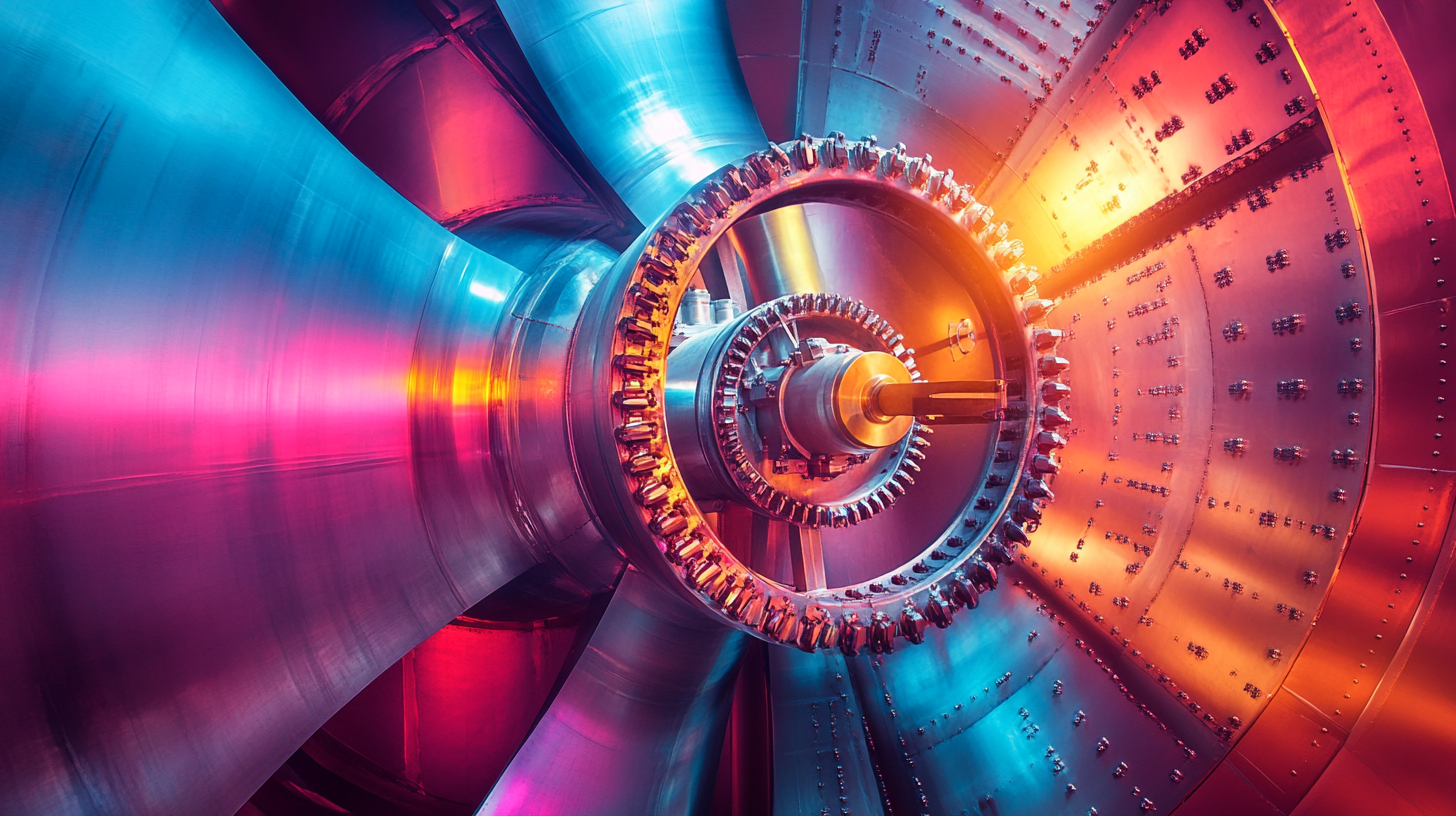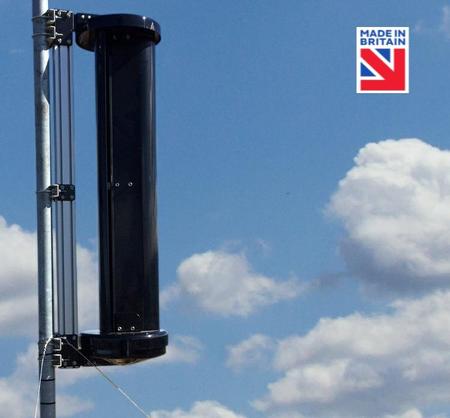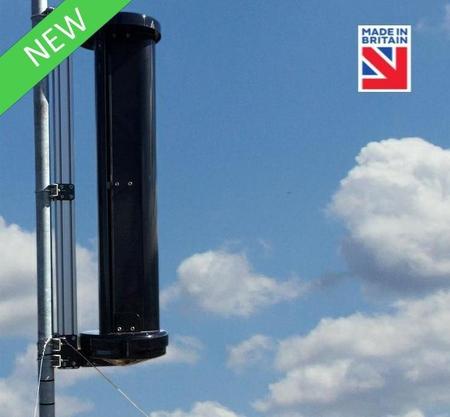Blog
China's Resilience in Wind Turbine Manufacturing Amidst US China Tariff Challenges
In an era marked by escalating tensions and tariffs between the United States and China, the resilience of China’s wind turbine manufacturing sector stands out as a remarkable narrative of adaptation and growth. Despite facing significant challenges posed by bilateral tariffs, Chinese manufacturers have continued to innovate and expand, solidifying their position in the global renewable energy market. Notably, the demand for sustainable solutions has spurred interest in smaller-scale alternatives such as wind turbines for home use, making renewable energy more accessible to everyday consumers. This blog delves into the strategies employed by Chinese manufacturers to thrive in a restrictive trade environment, exploring how their advancements contribute not only to industrial growth but also to the broader movement towards renewable energy adoption worldwide. By examining these developments, we can gain insights into the future of wind energy and the evolving landscape of manufacturing amidst global trade challenges.

China's Wind Turbine Industry: Navigating Tariffs and Challenges
China's wind turbine industry has demonstrated remarkable resilience in the face of escalating tariffs and trade tensions with the United States. As tariffs on Chinese-made components reach unprecedented levels, the industry has quickly adapted by searching for alternative markets and suppliers. This agility not only allows Chinese manufacturers to mitigate the impact of tariffs but also fosters innovation as they strive to enhance their competitive edge in technology and production efficiency.
Additionally, China's strategic investments in renewable energy infrastructure play a pivotal role in sustaining its wind turbine sector. The government continues to prioritize green energy development, providing subsidies and incentives to promote domestic manufacturing and research. As a result, Chinese firms are not only meeting local demands but also positioning themselves as key players in the global market. By leveraging both policy support and technological advancements, China's wind turbine industry exemplifies a proactive approach to overcoming external challenges while forging a sustainable path forward.

The Impact of US-China Tariffs on Renewable Energy Markets
The US-China trade war has cast a shadow over the renewable energy market, particularly as new tariffs imposed on Chinese products threaten to disrupt supply chains essential for clean energy technology. As noted in a recent report by Clean Energy Associates, the lithium-iron-phosphate battery market is facing significant price increases due to heavy tariffs on Chinese production, which could reshape pricing dynamics over the next two years. This shift is critical since many U.S. companies heavily rely on Chinese components for electric vehicles, solar panels, and wind turbines.
Additionally, the burgeoning clean energy sector in the United States could see its progress stunted, with experts warning of a meaningful blow to energy transition efforts as ongoing tariffs drive up imported costs. Indeed, UBS Wealth highlights that the continued decoupling between the U.S. and China could underline the risks to grid reliability and technology advancement, undermining recent successes in the renewable industry. The need for a balanced approach in trade relations with China is paramount to maintaining momentum in the quest for a cleaner energy future.
Impact of US-China Tariffs on Wind Turbine Manufacturing
The chart above illustrates the economic impact of US-China tariffs on the wind turbine manufacturing industry. It compares the value of US imports of wind turbines from China against China's exports of wind turbines to the US from 2018 to 2023. The trend shows a gradual decline in imports from China, reflecting the challenges imposed by tariffs, whereas China's exports also experienced fluctuations in response to these tariffs.
Innovative Strategies in Chinese Manufacturing for Wind Turbines
China's wind turbine manufacturing sector has displayed remarkable resilience in the face of US-China tariff challenges, leveraging innovative strategies to maintain its growth trajectory. According to the Global Wind Energy Council (GWEC), China accounted for 44% of new wind power installations globally in 2022, reaffirming its dominance in the industry. This has been made possible through investments in advanced manufacturing technologies and a focus on supply chain optimization. By utilizing automation and artificial intelligence, Chinese manufacturers have been able to enhance production efficiency, reduce costs, and respond more swiftly to market demands.
Moreover, Chinese companies are increasingly collaborating with international research institutions to foster innovation in turbine design and performance. For instance, the National Renewable Energy Laboratory's recent report highlighted that the global market for offshore wind turbine components is projected to reach $55 billion by 2025, with China aiming to capture a significant market share through superior engineering and technology. This strategic focus not only enhances the competitiveness of Chinese firms but also positions them as leaders in the transition towards sustainable energy solutions in the face of ongoing trade tensions.
Wind Turbine Manufacturing Market Share by Country (2023)
This pie chart illustrates the market share of wind turbine manufacturing by different countries in 2023. China stands out as the leader with 45% of the market, followed by the United States with 20%, and Germany with 15%. The remaining share is held by India and other countries.
Comparative Analysis: China's Growth vs. Global Competitors
China's wind turbine manufacturing sector has demonstrated remarkable resilience despite the ongoing tariff challenges posed by the US. A comparative analysis reveals that while US tariffs have intended to curb China's dominance, they have inadvertently spurred innovation and investment within the country. Chinese manufacturers have adapted by enhancing their supply chain efficiencies and pursuing new technologies, which enables them to lower production costs and improve product quality. This flexibility has positioned China favorably against global competitors, allowing them to maintain a significant market share in the renewable energy sector.
In contrast, Western competitors are facing increasing pressure to keep up with China's rapid advancements. Countries in Europe and even the US have struggled with rising production costs and regulatory hurdles that limit their competitiveness. This situation highlights a crucial divergence: while Chinese companies leverage economies of scale and aggressive state support, many global rivals are hamstrung by market constraints and slower adaptation to changing technological landscapes. As a result, China's growth trajectory in wind turbine manufacturing continues to outpace that of its competitors, reaffirming its leading role in the global shift toward renewable energy solutions.
China's Resilience in Wind Turbine Manufacturing Amidst US China Tariff Challenges
| Country | Market Share (%) | 2022 Wind Energy Capacity (GW) | Year-on-Year Growth (%) | Major Companies |
|---|---|---|---|---|
| China | 44.6% | 320 | 10.5% | Goldwind, Envision, Mingyang |
| USA | 16.4% | 138 | 8.6% | GE Renewable Energy, Siemens Gamesa |
| Germany | 11.6% | 67 | 4.2% | Siemens Gamesa, Nordex |
| India | 9.1% | 40 | 6.8% | Suzlon, Adani Green |
| Spain | 6.4% | 40 | 2.5% | Siemens Gamesa, Acciona |
Future Prospects for China’s Wind Energy Sector Amidst Trade Tensions
China's wind energy sector has displayed remarkable adaptability despite ongoing trade tensions with the United States. According to the Global Wind Energy Council (GWEC), China remains the world's largest producer of wind turbines, accounting for over 32% of the global installed capacity as of 2022. With ambitious targets to achieve 1,200 GW of wind power by 2030, China's focus on innovation and technology enhancements position it favorably in the face of tariff challenges.
The recent U.S. tariffs on Chinese-made wind turbine components have spurred China to accelerate its domestic supply chain development. A report from the China Renewable Energy Industry Association (CREIA) indicates that domestic manufacturers are increasing R&D investments, leading to significant advancements in turbine efficiency and reduced costs. The potential for growth is evident, with estimates suggesting that by 2025, the Chinese wind energy market could reach approximately $100 billion, bolstered by a robust domestic demand and international exports. As China navigates these turbulent waters, its resilience may very well set the stage for a leading role in the global wind energy landscape.

Tell us about your project
Our Off-grid experts will come back with recommendations






